
[ad_1]
Article could include Amazon & affiliate hyperlinks. As an Amazon Affiliate I earn from qualifying purchases at no further value to you.
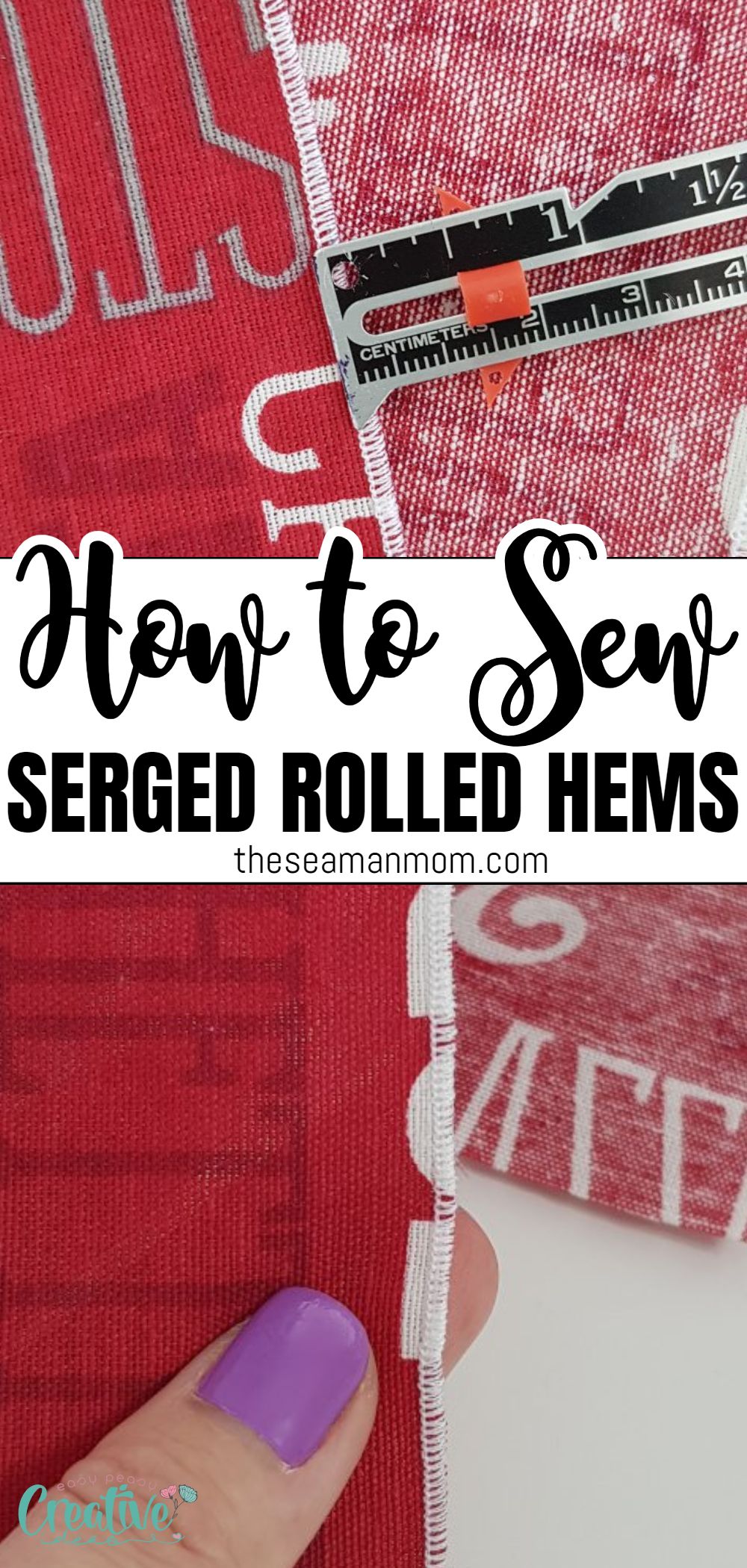
Do you know you need to use your serger to stitch each slim and rolled hems? You might discover that serging a rolled hem is definitely quite a bit simpler than the basic rolled hem technique! On this tutorial you’ll learn to sew a fast and delightful serged rolled hem in your overlock machine!
Serged rolled hem
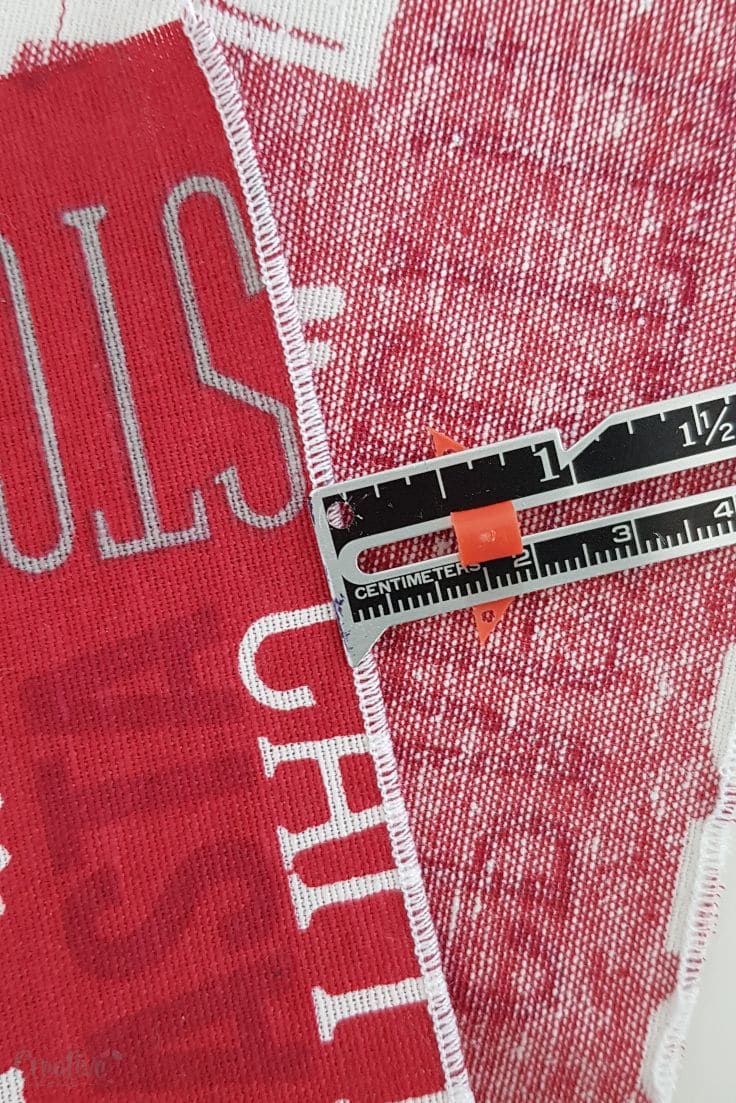
Ever needed to make a serged rolled hem together with your overlocker? I personally discover it quite a bit simpler to make a serger rolled hem than the basic technique highlighted right here. Serging a rolled hem is mainly a matter of fixing your overlocker settings and eradicating one of many needles so you find yourself stitching with three threads.
What’s a rolled hem?
For these new to this method, a rolled hem is a sublime approach to end off cloth edges. It’s usually used for light-weight materials comparable to chiffon, lace and silk. It’s a very slim hem that’s meant to be barely seen when considered from the proper facet of your cloth. It consists of folding the uncooked edge of your cloth twice after which stitching it in place.
Are you able to sew a rolled hem with out a particular foot?
Sure! You don’t want a particular presser foot to stitch a rolled hem. All you want is your serger/overlocker and the proper settings. Or you need to use my technique right here the place I made a slim hem with out a serger and no rolled hem foot.
What does slim hem imply?
A slim hem is a really small folded hem, normally sewn with a 1/4 inch seam allowance or much less that you just sew with an everyday foot in your stitching machine. It’s much like a rolled hem however not as delicate and it’s greatest used for light-weight delicate materials comparable to chiffon, silk and organza. It’s a fantastic various to the basic rolled hem in the event you don’t have an overlocker or rolled hem foot readily available.
What’s a serged rolled hem?
With a serger, you possibly can simply sew your rolled hem with out having to fold the sting manually and with out utilizing a particular foot. Most sergers supply a two-thread or a three-thread slim and rolled edge. Two thread rolled hems are sometimes seen on light-weight materials comparable to chiffon and organza whereas the three thread serged rolled hem method is usually used for cottons. The overlocker rolled hem is commonly seen on the sides of napkins, desk linens, ornamental pillows, single layer ruffles, scarves and typically on knit clothes.
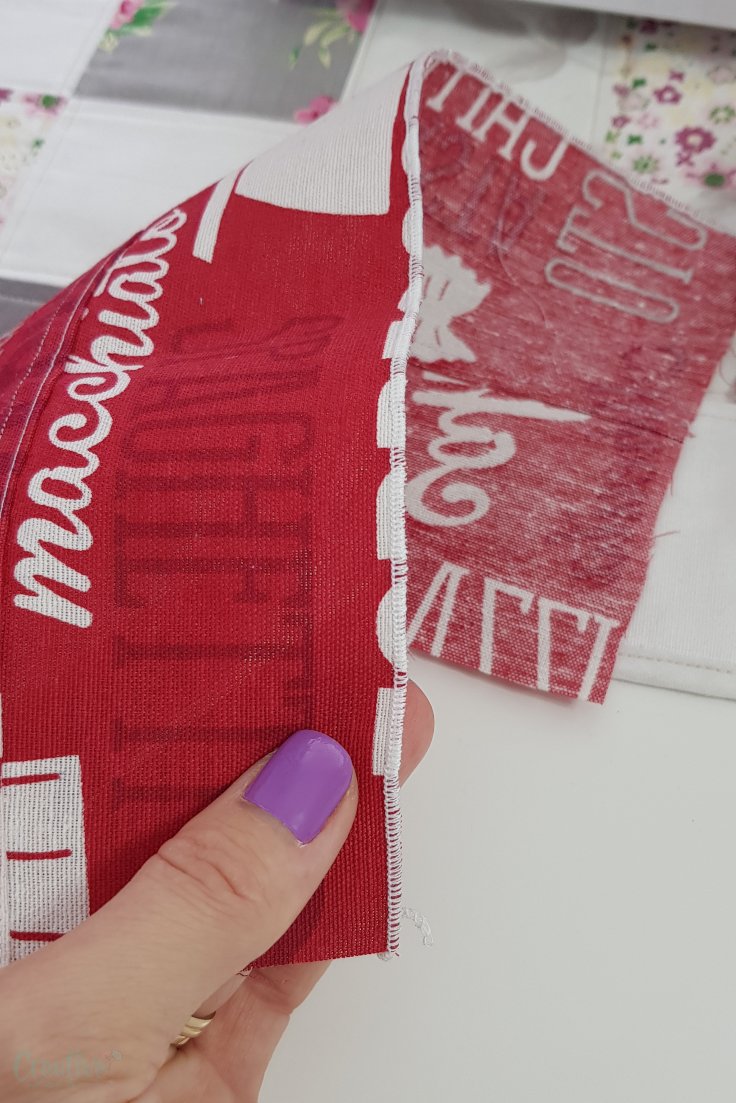
Extra stitching ideas you’ll love:
Methods to make the rolled hem with a serger
To get a slim hem with a serger machine you merely must take away the thread within the left needle, take away or alter the stitching finger (this will depend on the overlocker you’re utilizing) and alter the sew width to the narrowest setting. To get a rolled hem it’s essential observe all of the steps in a slim hem but in addition alter the stress within the higher looper and decrease looper.
Confused a lot? No must, I’ll get into extra particulars beneath the place we’ll learn to serge a rolled hem in only a few simple and easy steps. Earlier than that, please find the sew finger in your overlocker, the sew width and sew lengths dials and the stress dials. If essential, seize the directions guide and test for these elements. For this tutorial I used a Brother 1034D however the directions ought to be legitimate for many overlockers. When you perceive the method, stitching a roled hem in your overlocker is only a matter of adjusting settings.
Methods to sew a rolled hem with a serger
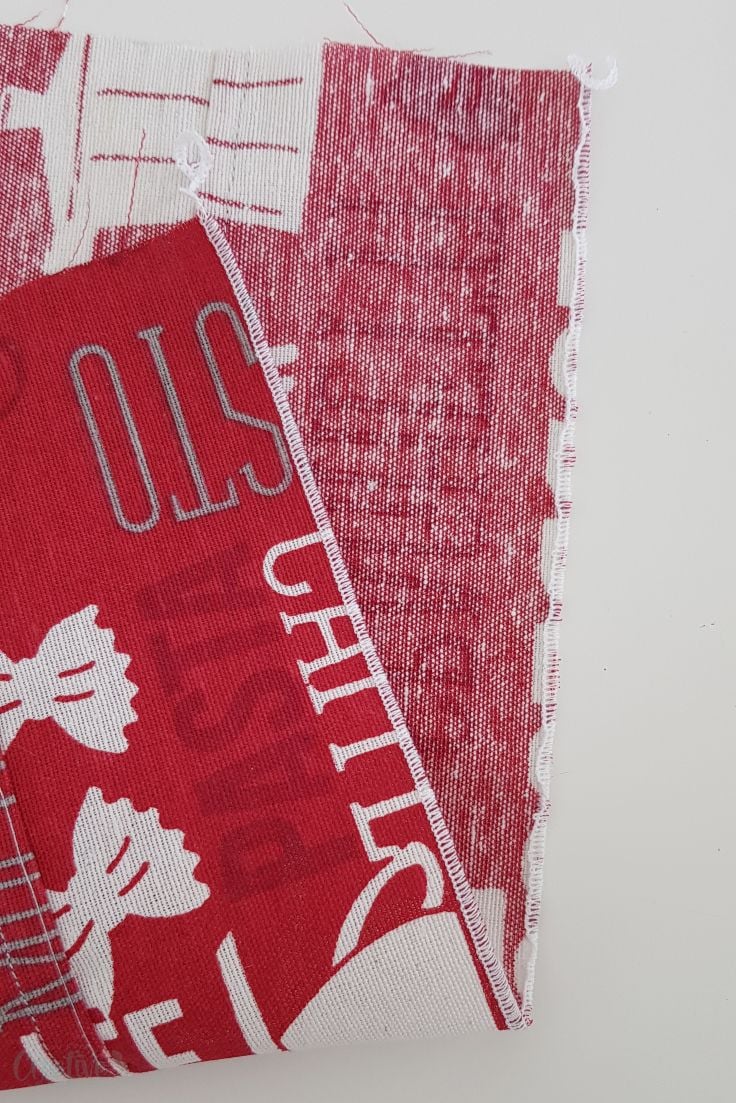
Supplies:
- cloth scraps
- serger
- serger thread
Instructions:
Earlier than beginning to work in your serged slim or rolled hem, be sure to be aware of your present serger settings for ease of reference once you revert to your earlier serger settings earlier than the adjustment. Once you’re accomplished making your rolled hem sew, merely refer to those notes to revert your serger settings to a 4 thread sew.
To stitch a slim hem
- Take away the needle thread from the left needle (if utilizing a two needle overlocker).
- Unscrew the left needle, take away it and preserve it on a facet. I discovered that I didn’t must re-thread my serger if I used to be being cautious when eradicating the needle.
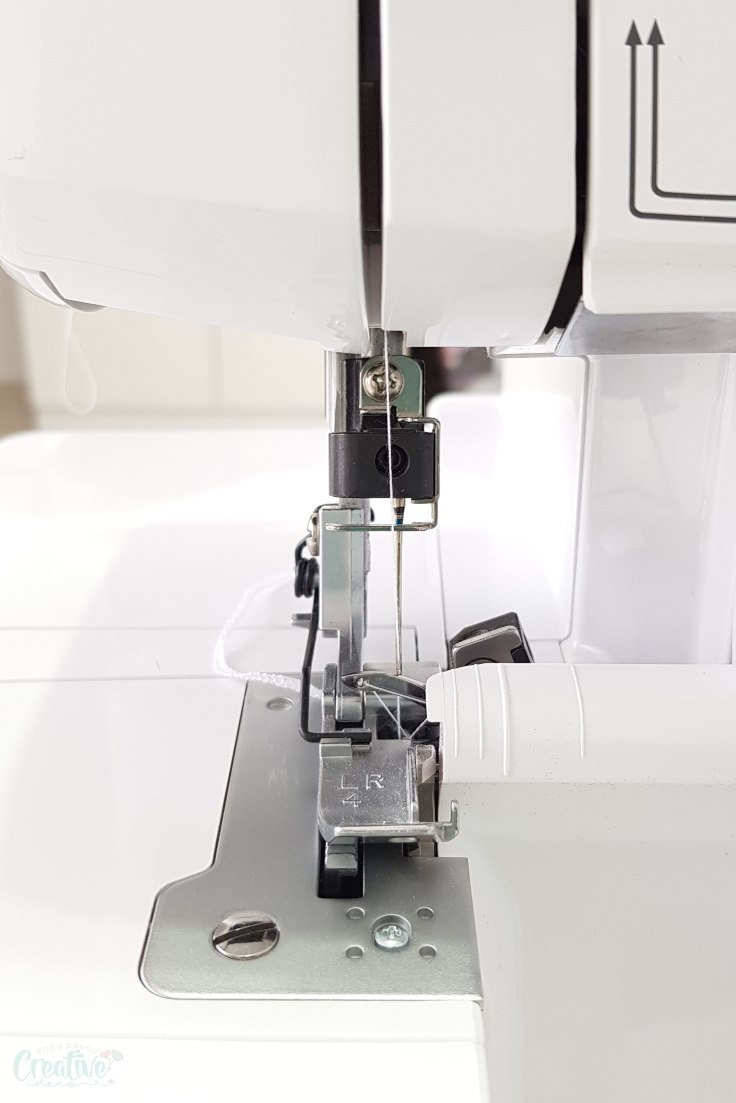
- Find the sew finger and both take away it or alter it to the bottom setting. My Brother 1034D requires the removing of the sew finger and it has a particular slot the place you possibly can preserve it till it’s essential put it again. To find the sew finger on such machine, merely slide the door open and search for the sew finger on the left hand facet, slightly below the step quantity 9 you observe when threading the serger, as indicated within the image beneath.
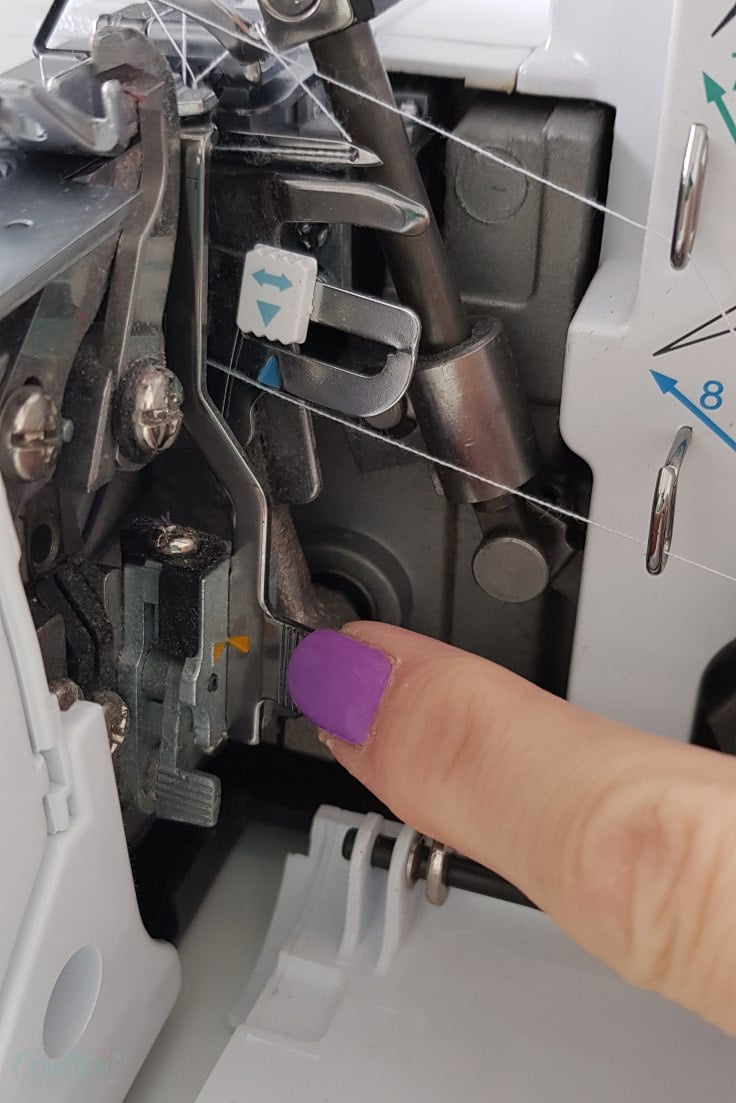
- To take away the sew finger, firmly press the little button below the finger, as indicated beneath. Relying on the firmness of the push, the sew finger will both come out somewhat or fall. If it solely pops out somewhat, merely take away it together with your fingers, it can slide out simply.
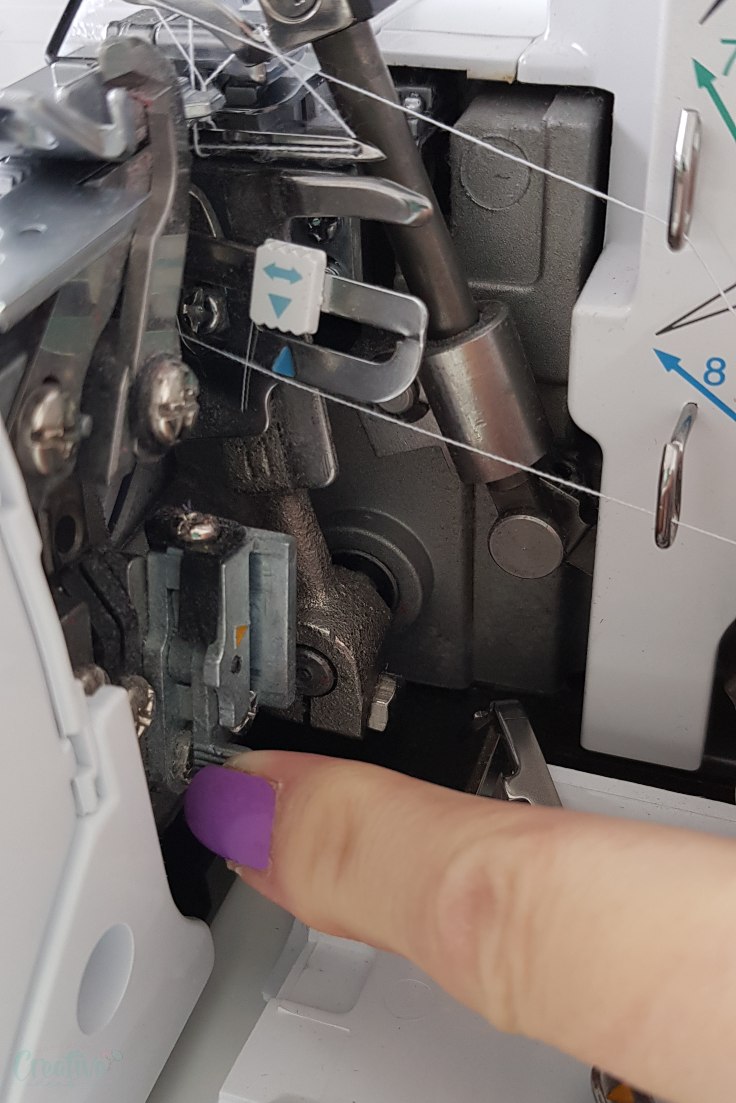
- The storing slot for the sew finger is positioned on the sliding door.
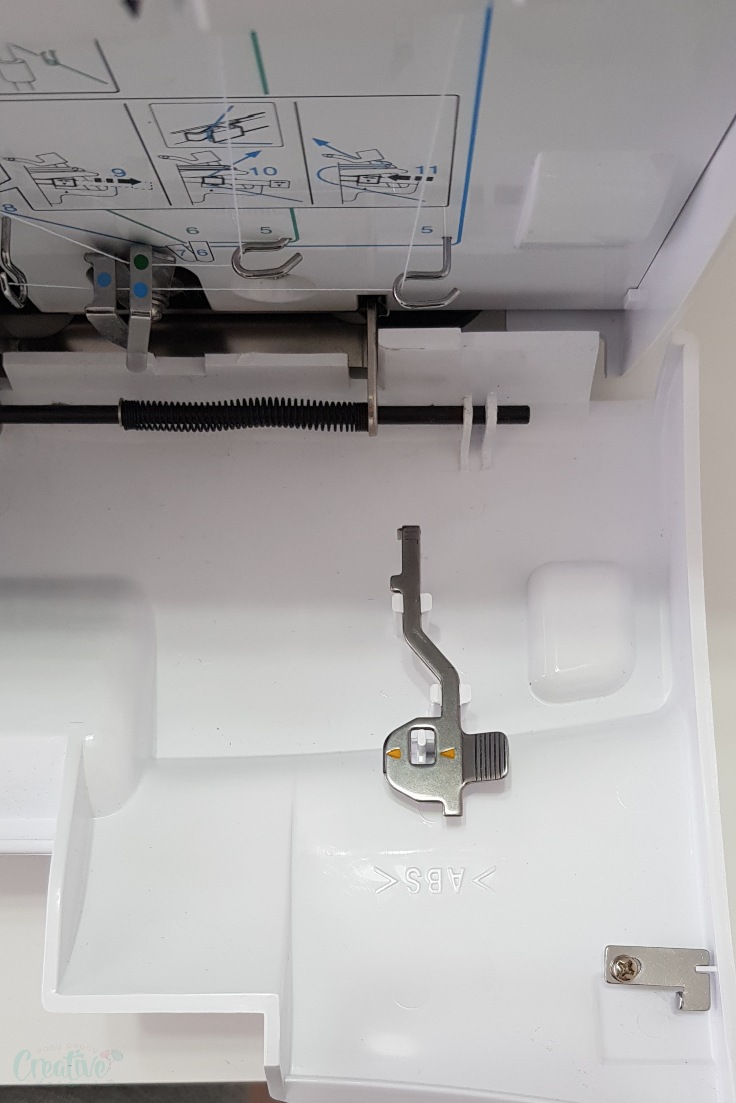
- Find the sew width dial and alter to the narrowest width. If wanted alter the sew size too (if the unique size is just too vast).
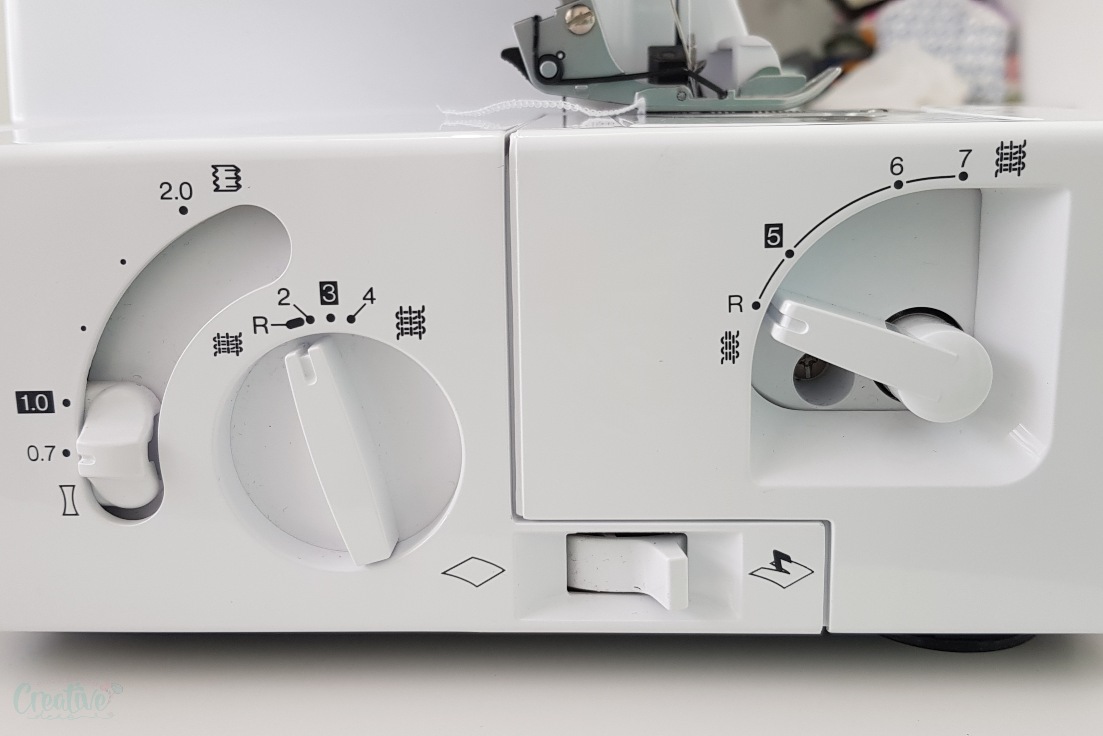
- Earlier than stitching on the proper facet of the garment, be sure to have a pleasant tail sewn first. You possibly can select to cover these thread ends (tails) at begin and finish as I did in this tutorial.
- Start stitching for a fast and fairly, slim hem.
To stitch a serged rolled hem
- Observe all of the steps above however earlier than beginning to sew, do the extra steps beneath.
- Alter the proper needle pressure to a 3.
- Alter the higher looper pressure to a decrease setting than decrease looper (something between 3 and 5 ought to work – please run assessments earlier than serging a closing hem). I used a 5 on my Brother 1034D.
- Alter the decrease looper pressure to the next setting than the higher looper pressure (between 6 and eight). I used a 7 on my Brother serger.
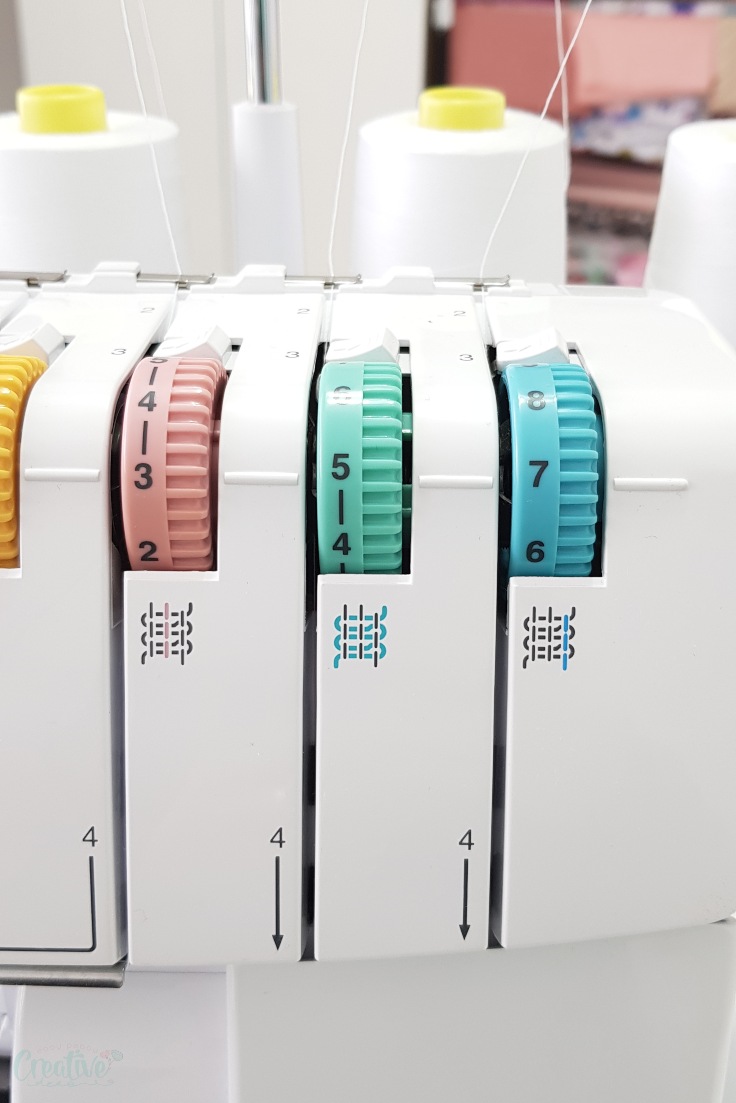
- Maintain adjusting the tensions till you’re proud of how the material edge rolls below. Please observe that the quantity of rolled cloth will depend on the kind of cloth used and the sew width. Skinny materials will roll greatest whereas medium weight materials will roll just a bit bit, like in my challenge right here. You possibly can change the look of your rolled hem by altering your sew size and width.
- Start stitching with the material proper facet up and preserve adjusting your higher and decrease looper tensions till you see the hem edge flip below.
Revert to 4 thread stitching
- Substitute the sew finger to its authentic place.
- Substitute the left needle in its authentic slot and thread.
- Revert to the unique settings for the sew width, sew size and pressure dials.
- Run a couple of stitches to create a tail and ensure your serger capabilities at regular parameters.
I discovered that making use of all of the above directions to very skinny materials like veil, skinny silks or organza is not going to produce the identical outcomes! Which means your hem stitches would possibly begin falling aside as you possibly can simply pull the rolled hem off as a result of the fibers weaved in these materials will not be sturdy sufficient, as illustrated beneath.
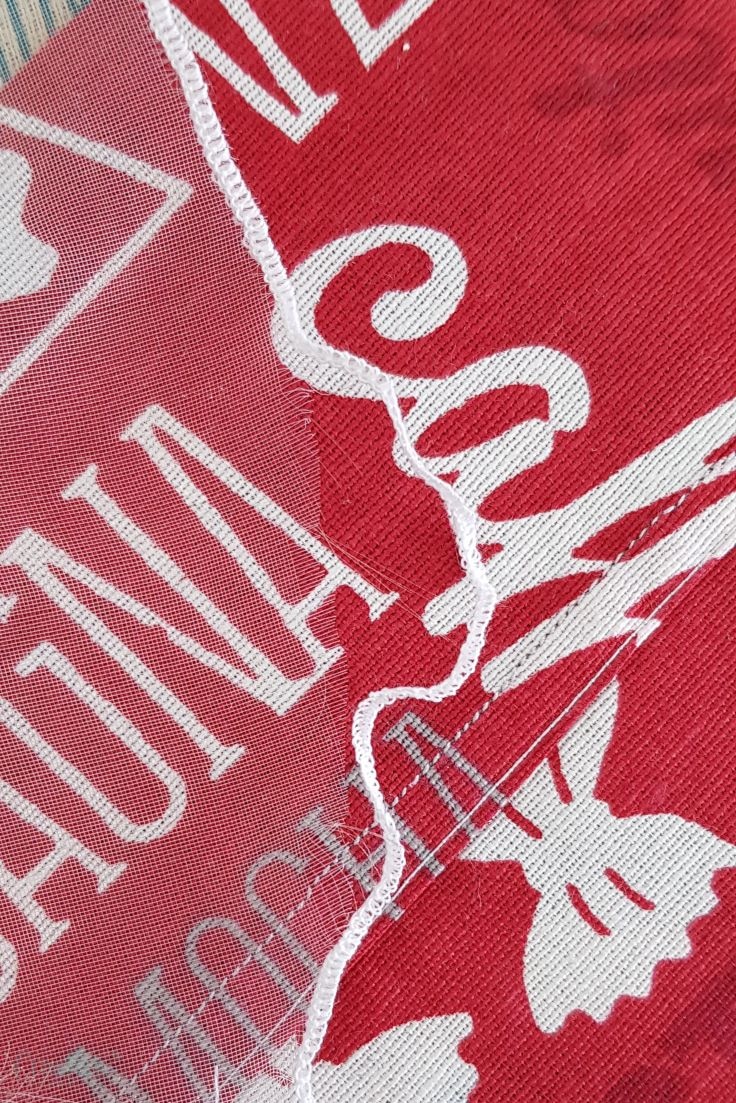
If that is so together with your cloth, merely use some seam sealant like fusible interfacing or stabilizer to bolster the uncooked fringe of the material and forestall the rolled hem from coming off. Then fold the sting twice and press with a urgent iron.
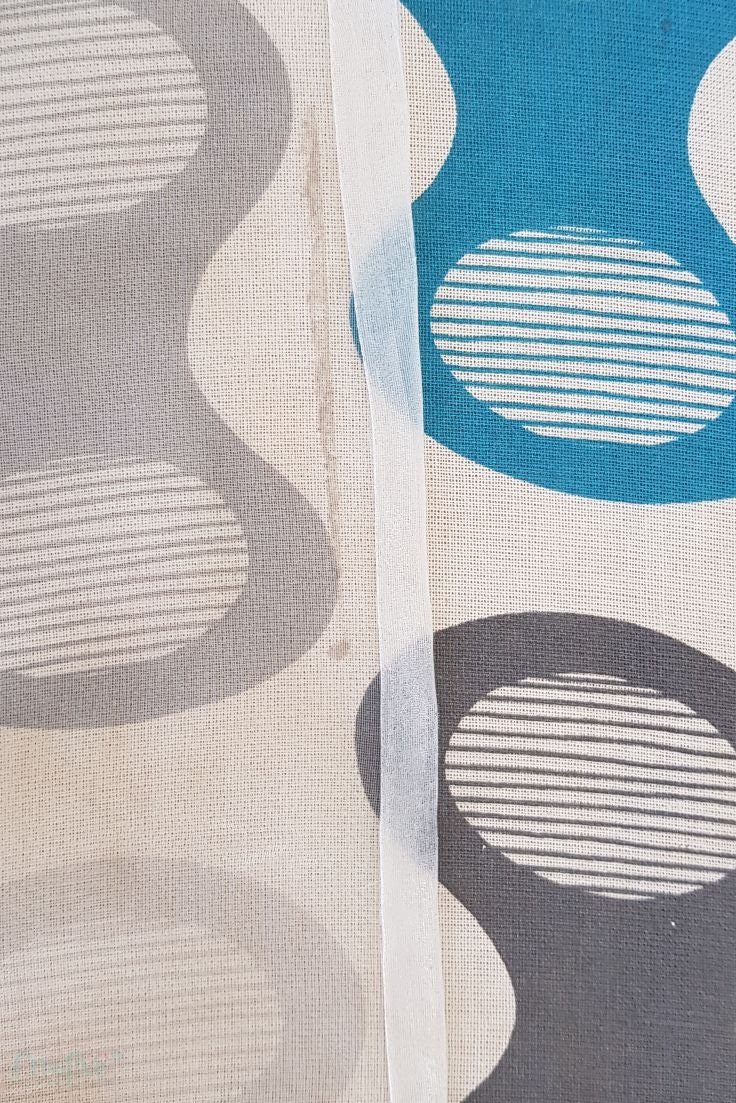
Observe by stitching the rolled hem as indicated above. End by trimming the surplus interfaced cloth from the completed edge with embroidery scissors.
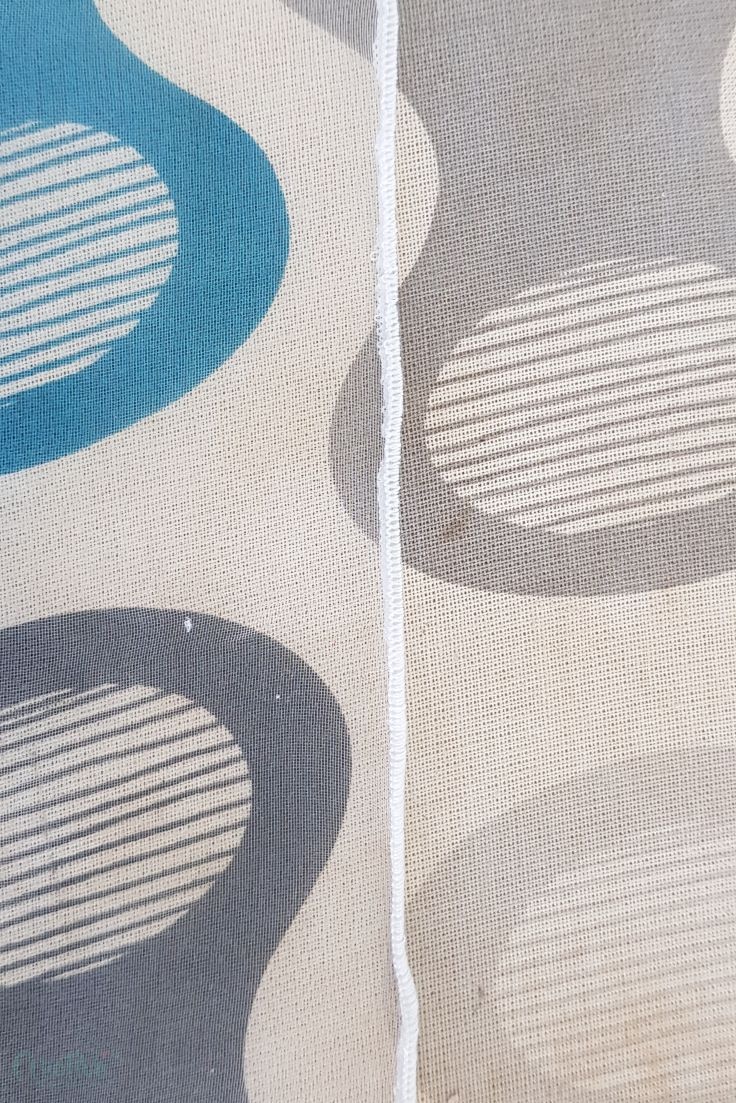
That concludes the tutorial. Did you discover it simple and pleasant? Let me know within the feedback what tasks you intend to make use of this hemming method for. Thanks and blissful stitching!
Pin to save lots of for later
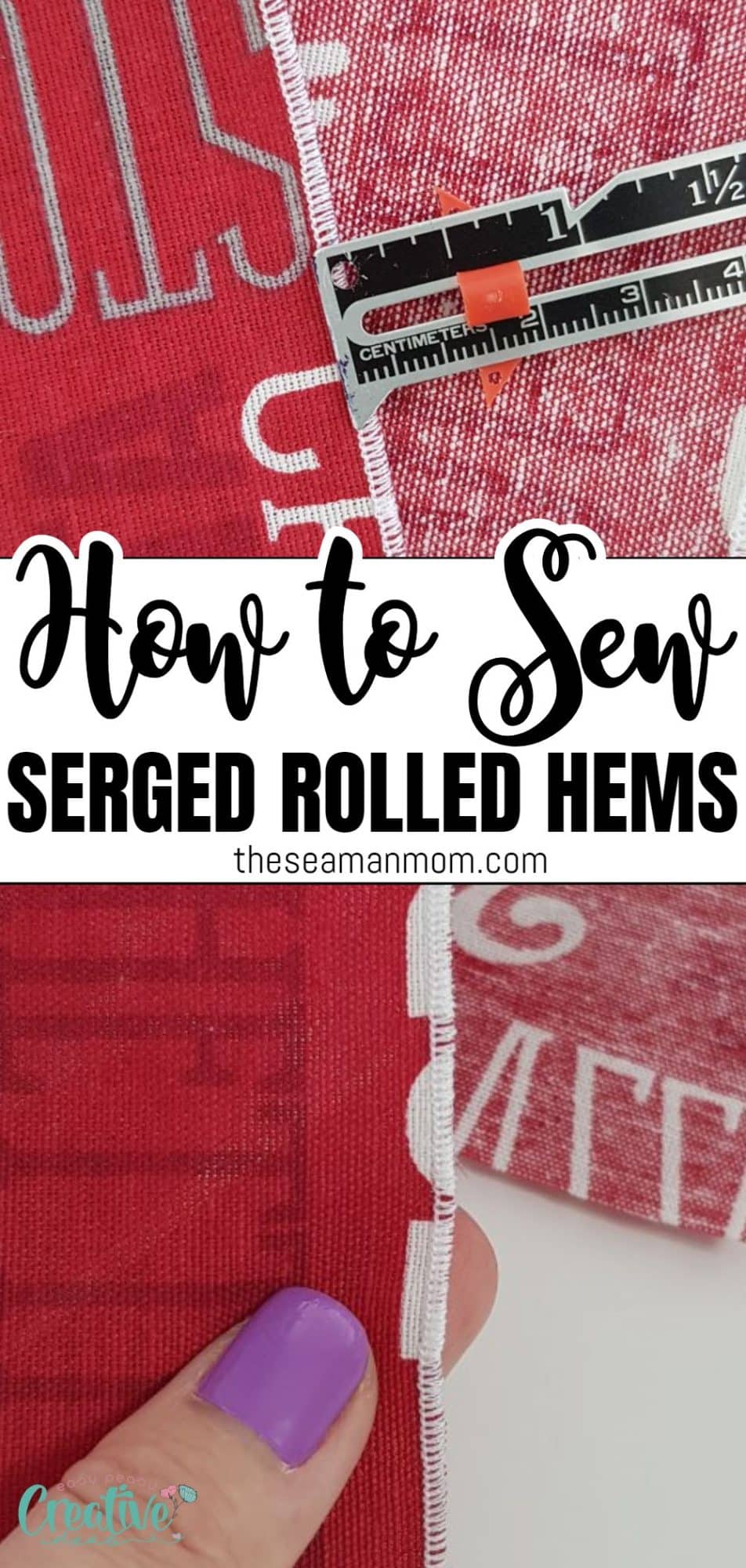
Hottest stitching tasks:
[ad_2]